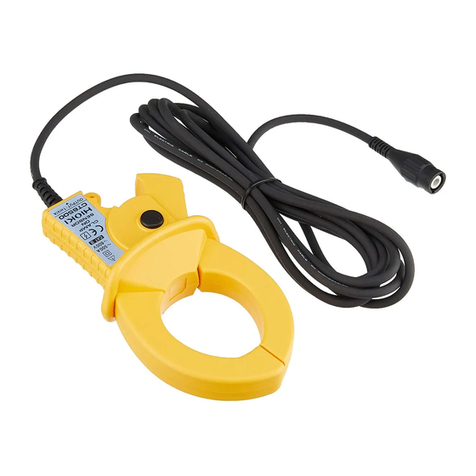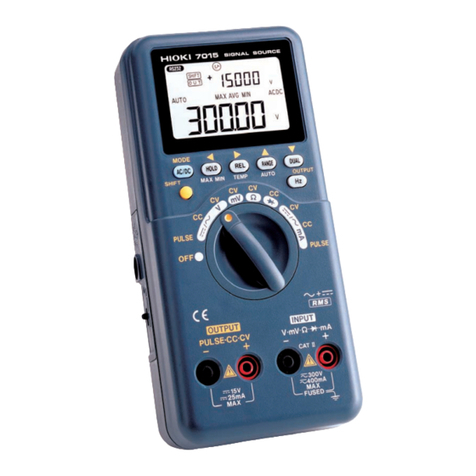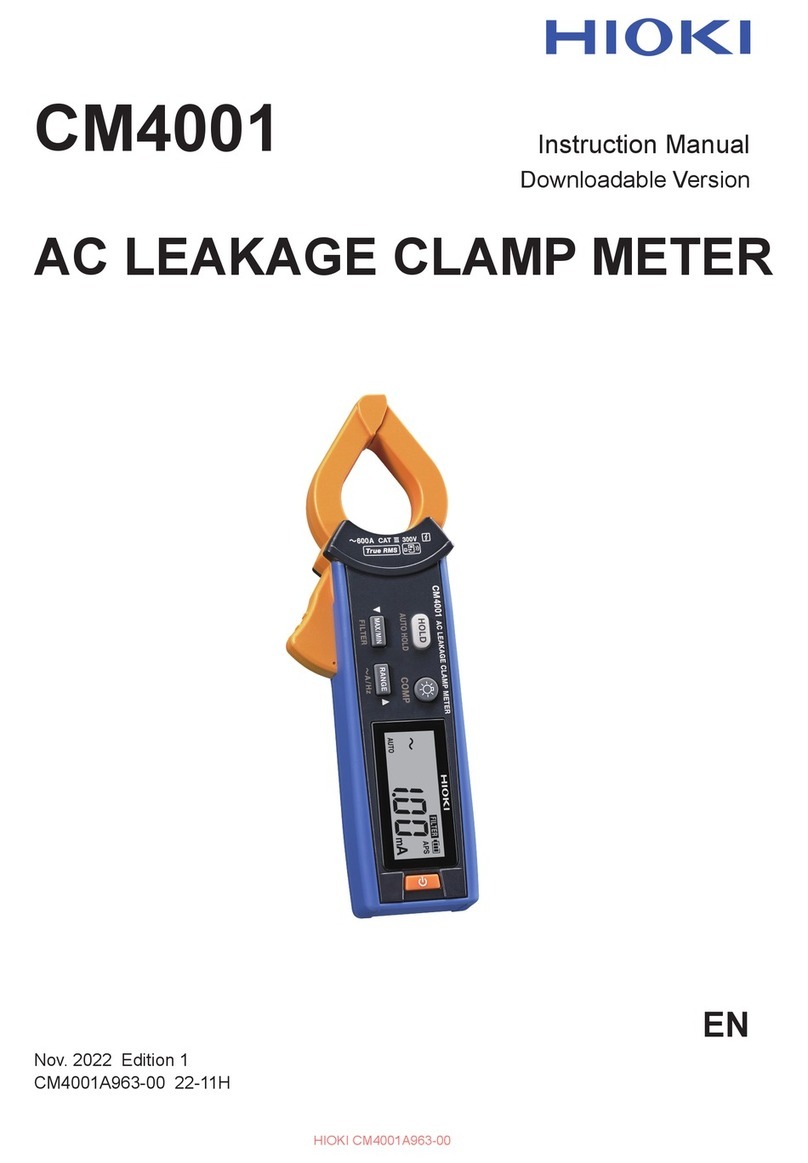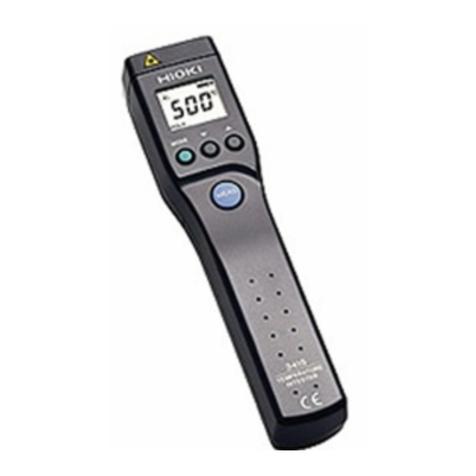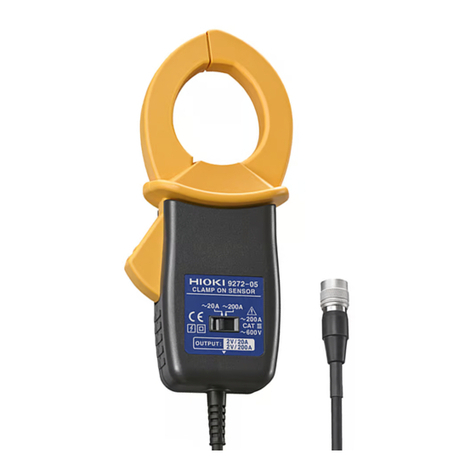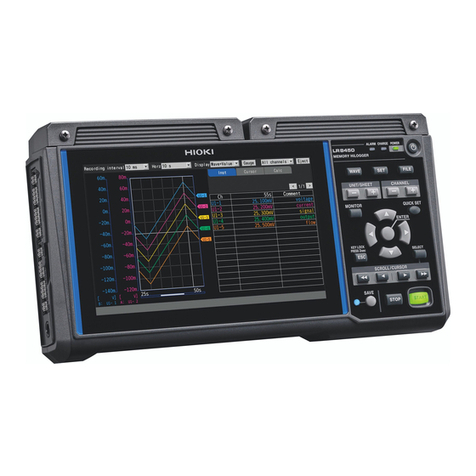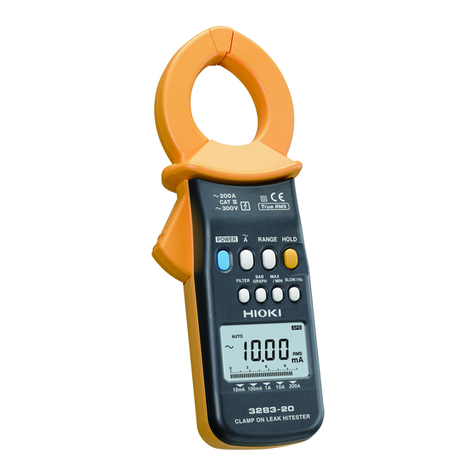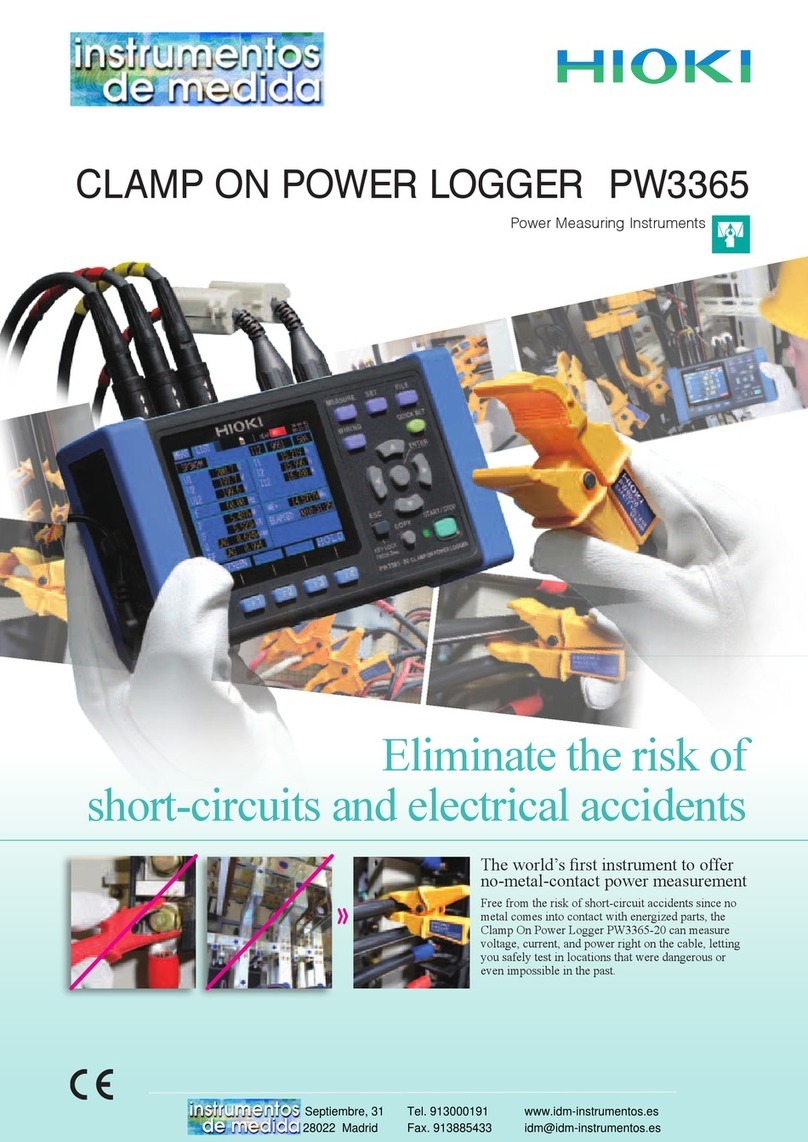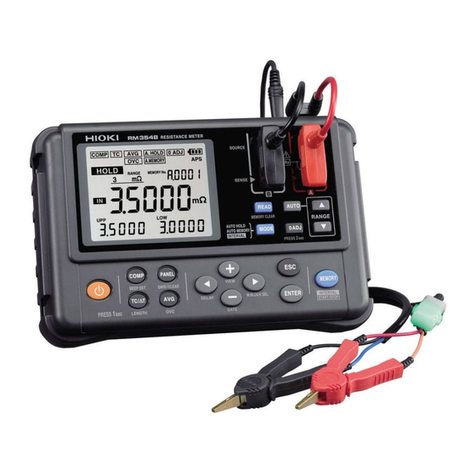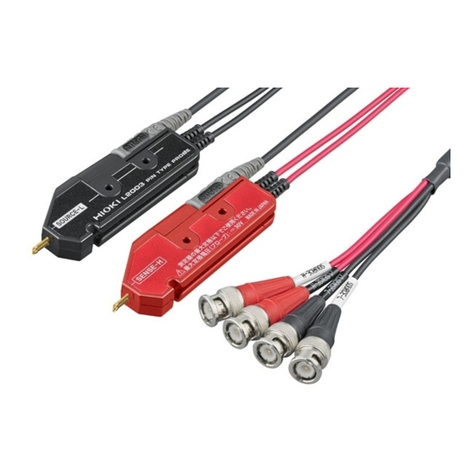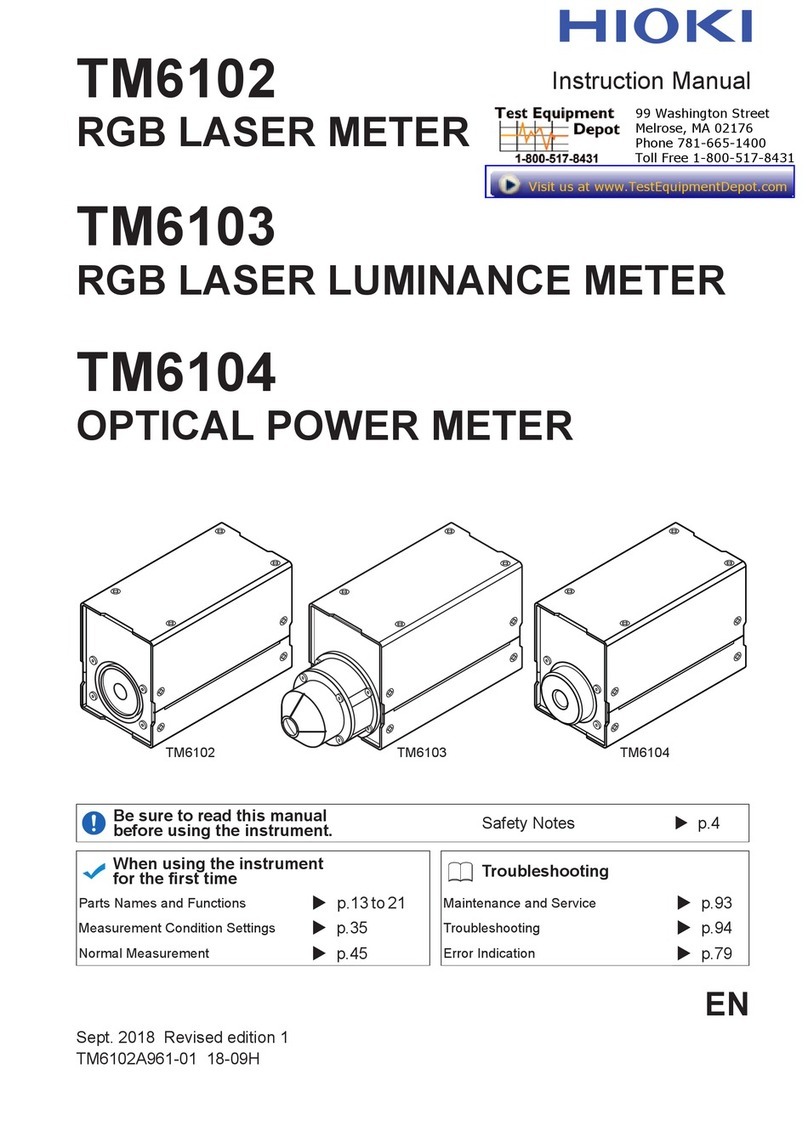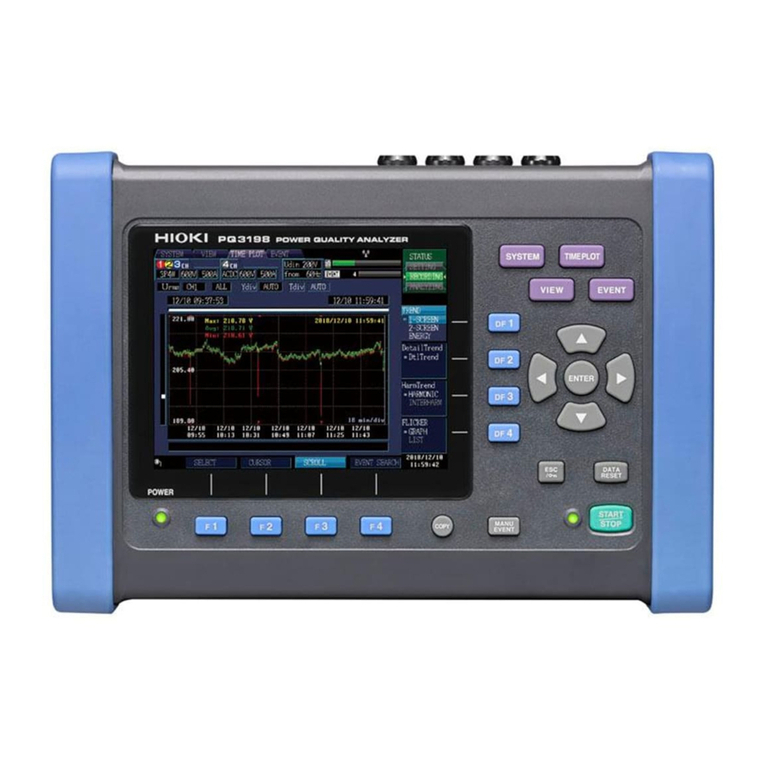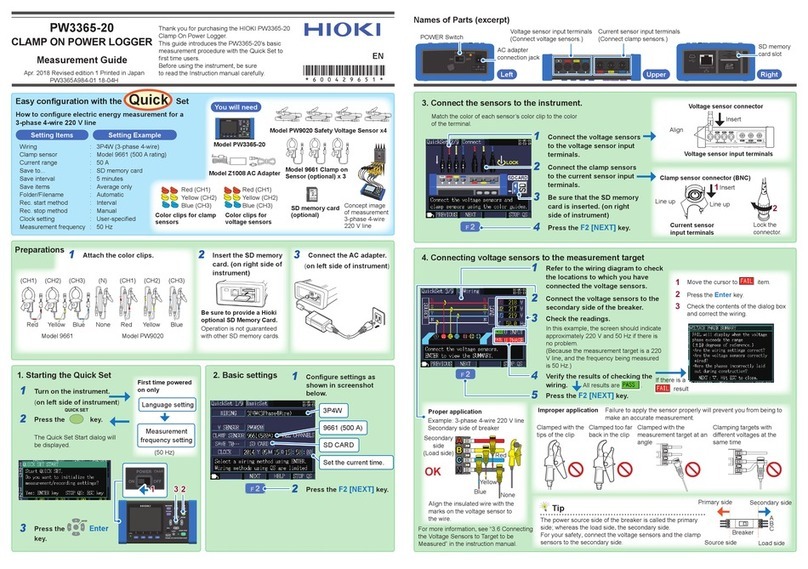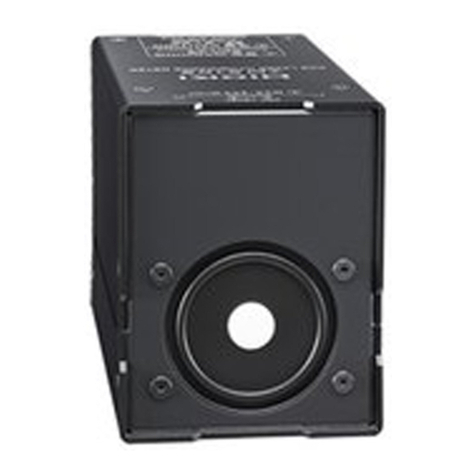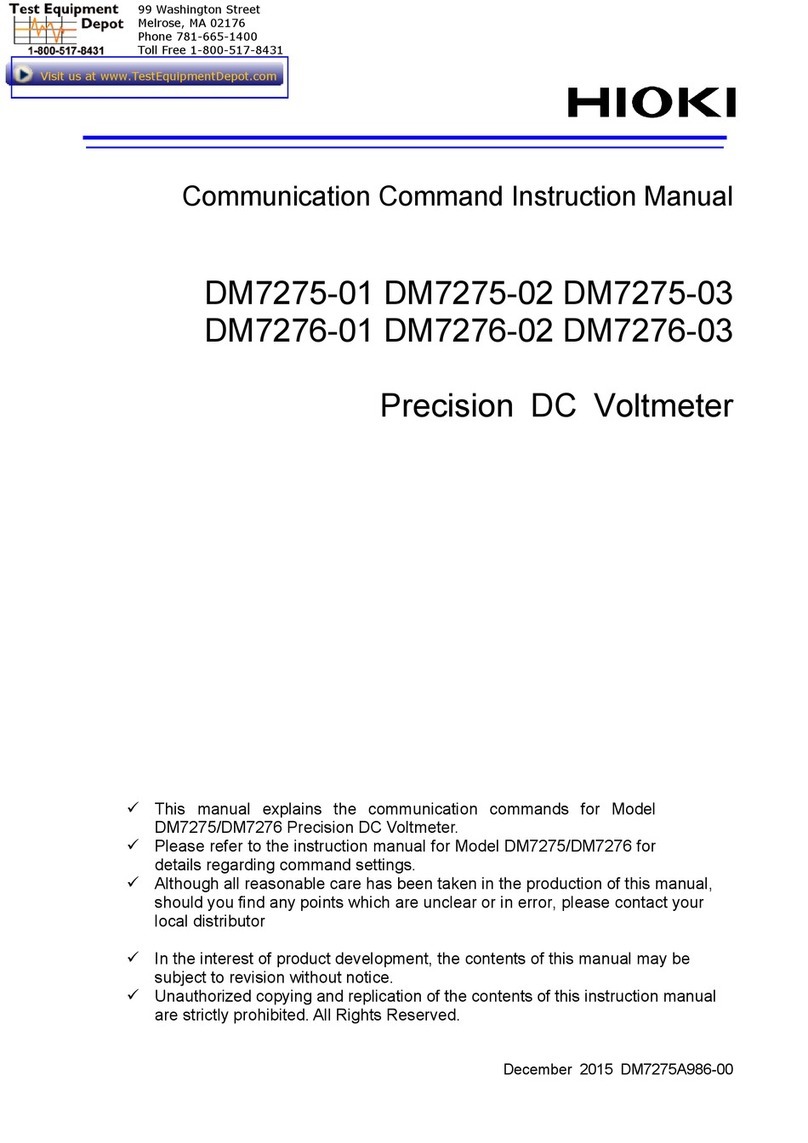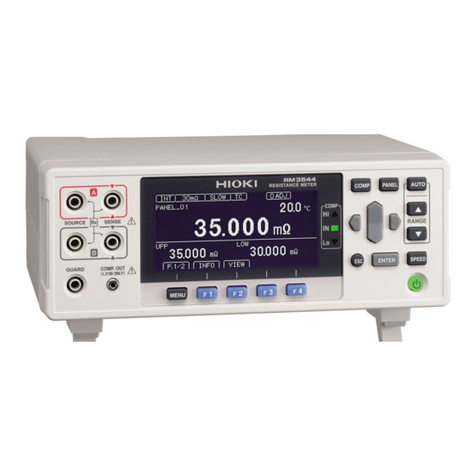
Contents
iv
6.5 CorrectingMeasuredValues......... 77
Adjusting the zero-point (NULL function)....78
Compensating the effects of temperature
(temperature
compensation
function)..........80
Correcting measured values using a
linear expression (scaling function) ............82
6.6 StatisticalCalculations.................. 84
Displaying, clearing, and printing
statistical calculation results .......................85
7 SystemSettings 87
7.1 KeyLock(DisablingInstrument
Operation)....................................... 87
7.2 BuzzerSettings .............................. 88
7.3 AdjustingtheScreenBrightness . 89
7.4 ChangingtheScreenColor........... 89
7.5 AdjustingtheTouchPanel
Position........................................... 90
7.6 SettingthePowerSupply
Frequency ....................................... 90
7.7 SelectingStartupLoadSettings
and a Panel ..................................... 91
7.8 SettingOutputFormats ................. 92
7.9 ResettingtheInstrument
(Reverting the Instrument to Its
FactorySettings)............................ 93
List of default settings.................................94
8 PreparingtoUseUSB,
RS-232C,GP-IB,and
LANControl 97
8.1 OverviewofInterfacesand
Associated Features...................... 97
8.2 PreparingtoUseanInterface
(Connection and Settings) ............ 98
Using the USB interface .............................98
Using the RS-232C interface....................100
Using the GP-IB interface.........................102
Using the LAN interface............................104
8.3 CommunicationsSettings........... 109
Communications monitor (displaying
communications commands) ....................109
Setting the format for measurement.........110
Setting the model name acquired by
commands................................................110
9 Outputting Data 111
9.1 Interface Settings..........................111
9.2 Output Methods.............................112
9.3 Data Output Settings ....................113
10 Using a USB Flash
Drive 115
10.1 Overview ........................................115
10.2 ConnectingaUSBFlashDrive ....116
10.3 SettingtheInterface......................117
10.4 SettingtheOutputDataType .......117
10.5 OutputtingData(USBFlash
Drive)..............................................118
Outputting measurement data or
screenshots ..............................................118
Outputting all measurement data..............119
10.6 OutputtingandLoading
Measurement Conditions (USB
Flash Drive)................................... 120
Outputting measurement conditions.........120
Loading measurement conditions.............122
10.7 Files ............................................... 123
File format.................................................123
11 ExternalControl(EXTI/
O) 125
11.1 ExternalControlMeasurement
Process ......................................... 125
11.2 SwitchingbetweenCurrentSink
(NPN) and Current Source (PNP) 126
11.3 Connections (Instrument and
Control Device)............................. 127
Instrument connector and compatible
connectors................................................128
Signal functions ........................................129
Internal circuit architecture........................133
Electrical specications.............................134
Example connections................................134
11.4 ConguringExternalInputand
Output ........................................... 136
Input lter ..................................................136
EOM signal output type ............................137
11.5 InputTest/OutputTest ................. 138
11.6 TimingChart ................................. 139
Timing from the start of measurement to
acquisition of judgment results .................139
Panel load timing......................................141
Output signal status when the
instrument is turned on.............................142
www. .com information@itm.com1.800.561.8187
